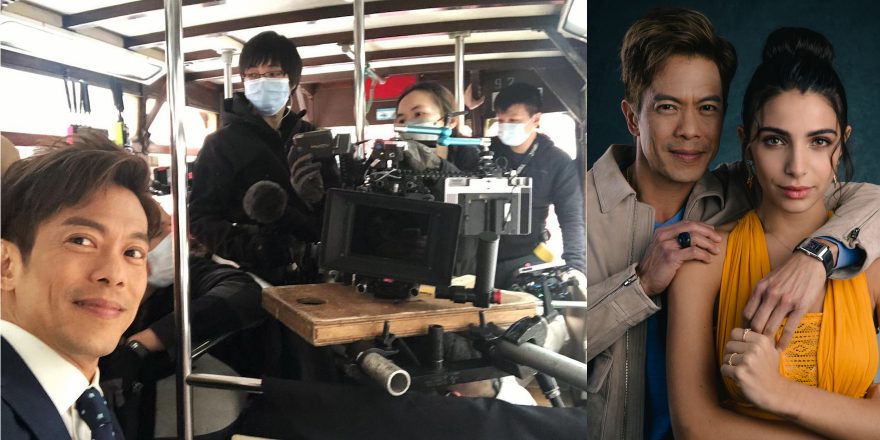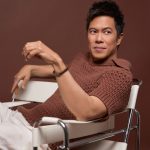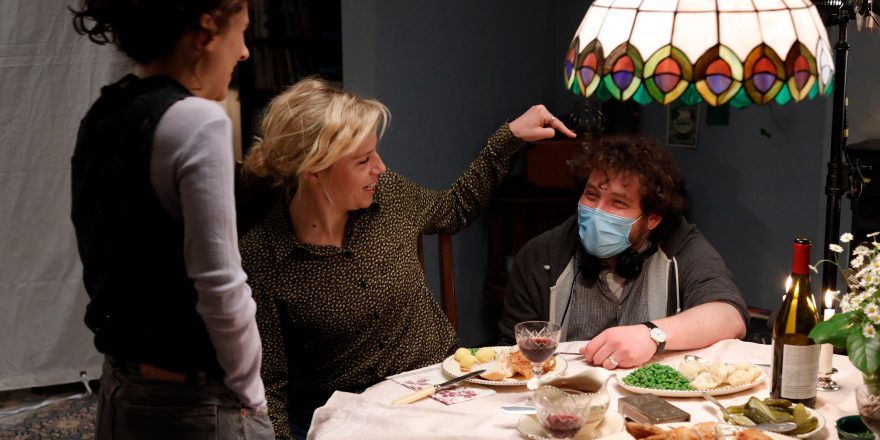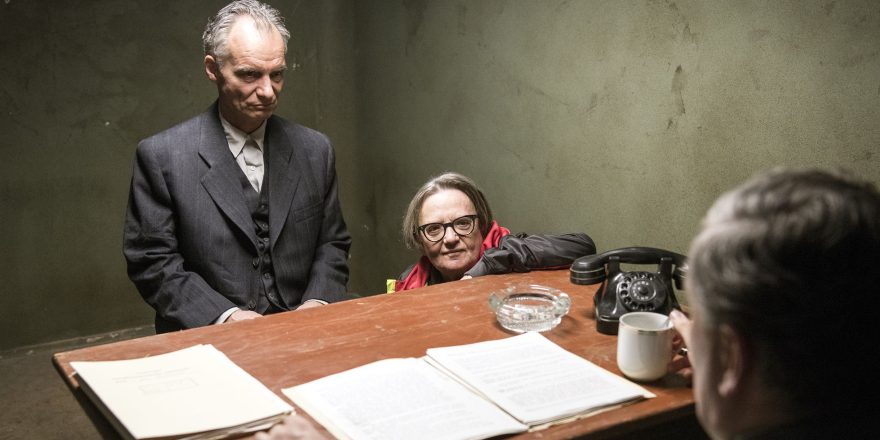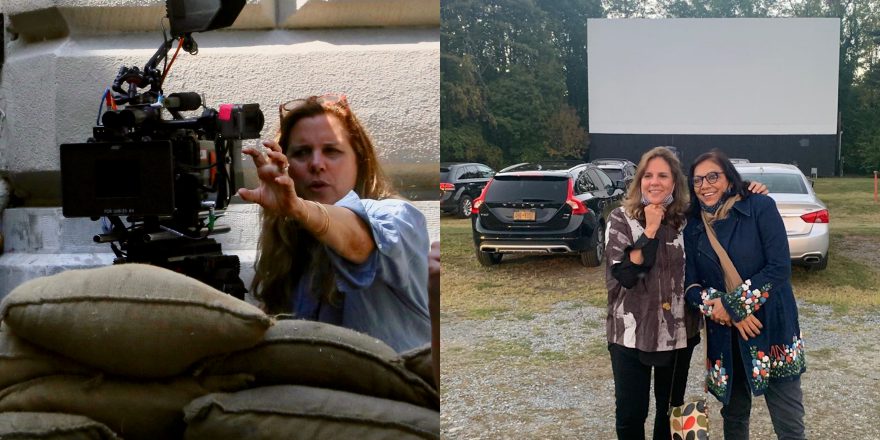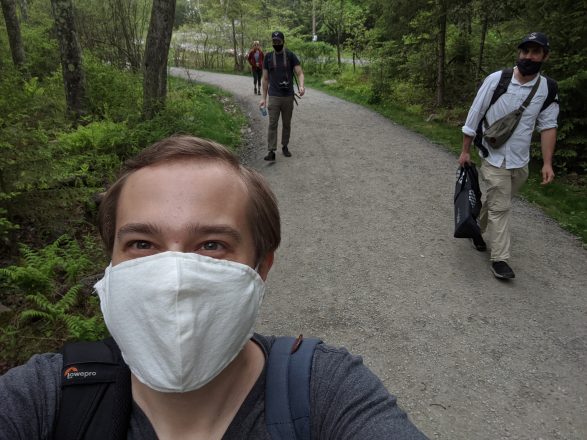There’s a saying that every film that comes together is a miracle. In the case of The Modelizer – the first film I’ve ever produced – that would be an understatement.
Shooting this film at the height of COVID-19, in locked-down Hong Kong, with an international cast and crew flying into the city under strict quarantine restrictions, there were many moments during the production process when The Modelizer could easily have collapsed. I can think of a dozen miracles that happened that enabled us to finish the film. I’ll mention three here:
Getting the Director, Producers and Cinematographer into Hong Kong
The Modelizer is a romantic comedy set in the world of international models in Hong Kong. Hong Kong was a character in the film. And the entire film had to be shot there.
We had to get director Keoni Waxman (with whom I developed the story), his 1st Assistant Director, his cinematographer and two producers from Los Angeles to Hong Kong. And we had to apply for work visas for them all, which was challenging, as the Hong Kong Immigration Department was on periodic leave because of COVID-19. We had a tight six- to eight-week window to apply for work visas, courier them to Los Angeles, distribute them to everyone there, fly all of them into Hong Kong, and undergo quarantine for two weeks in order to start shooting by mid-December 2020. If we couldn’t make that time frame, we would have to push our shoot into 2021, but we’d be running up against Chinese New Year at the end of January. If that happened, we’d lose the cast and crew, and we would be forced to start over.
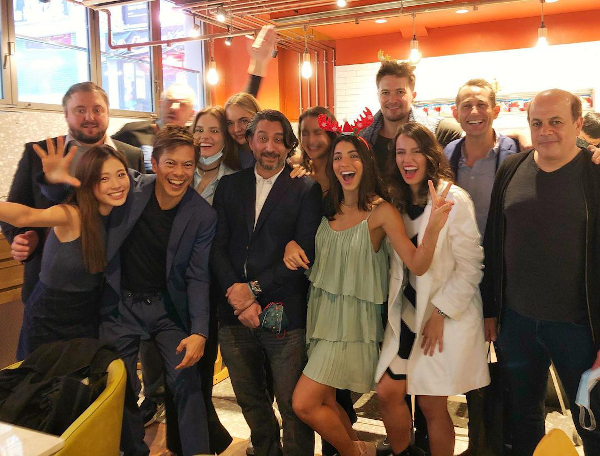
If Keoni or any of the U.S. filmmakers tested positive upon their arrival (a requirement at the Hong Kong airport), they would be sequestered in a government facility until they recovered. Worst of all, we faced a fast-deteriorating U.S.-China geopolitical relationship. It wasn’t even certain the Hong Kong government would grant our U.S. filmmakers the work visa. If that happened, we would have no movie at all.
Miraculously, the Hong Kong Immigration Department processed all of their work visas in a week. They all tested negative on arrival, and continued to test negative during their two-week quarantine in Hong Kong. They came out of quarantine, rested and dived into pre-production as scheduled.
Getting Our Leading Lady into Hong Kong
Rayssa Bratillieri plays the female lead in The Modelizer, Brazilian model Camila, who comes to Hong Kong and meets my character, Shawn.
One thing I learned very quickly in the casting process is that no one else in the world except Brazilians can speak Brazilian Portuguese. We saw many actresses from Portugal, but their accents were so different from Brazilian Portuguese that the moment any Portuguese actress started speaking, Brazilian audiences would know she was not from Brazil.
Our casting challenge was to find someone from Brazil who could play a character in her early 20s (the average age of a working model in Hong Kong) and who was tall enough to pass as a model. Casting this part was not easy. After months of searching, we were fortunate to find Rayssa.
The night before she got on a plane to Hong Kong, she called us with the worst news possible: she had tested positive for COVID-19. Recasting was not an option at that point – we were two-and-a-half weeks from the start of principal photography. If we recast, it would be another four- to six-week process – negotiating with another actress, applying for another work visa, and quarantining for another two weeks in Hong Kong before she could start working. The honest truth, however, was that Rayssa was our only choice. We didn’t have a backup.
Meanwhile, all the other actors were already in Hong Kong and in quarantine. Keoni and I discussed options. Instead of making the Brazilian model the female lead in the film, how about making the Polish model (Dominika Kachlik) the female lead instead, since Dominika was already in Hong Kong? It was an idea – but a terrible one, I thought. That would be like making Sonny Corleone the main character in The Godfather, instead of Michael Corleone. It would mean a page-one rewrite of our entire film – two weeks before we started filming.
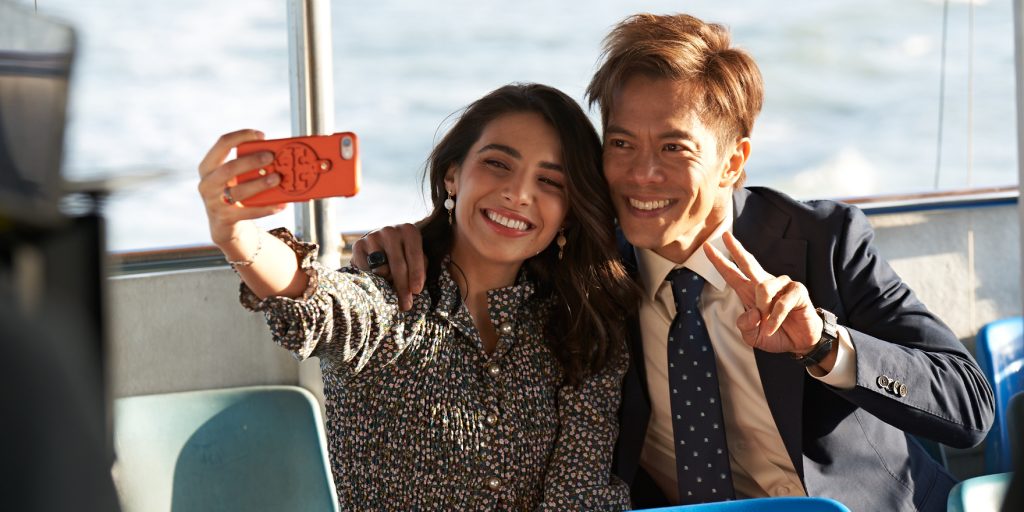
We rolled the dice and told Rayssa to get on the plane to Hong Kong, hoping she might test negative when she landed. But, inevitably, she tested positive on arrival and was sequestered in a quarantine hotel, waiting to be sent to a government facility. We had little communication with her during that time, and had no idea when she would come out. This was still in the early stages of COVID-19, and we had no idea when she would test negative. The clock was ticking – we were less than two weeks from the start of filming. If the government did not release her until, say, two months later, our film would be toast.
Two days later, we received word that she had been tested again, but was still positive. We continued on with pre-production, but the elephant in the room was strikingly obvious – we were facing the reality that our romantic comedy would not have a leading lady. At the end of each day, the director, producers and I would huddle to discuss options and find out if anyone had heard from Rayssa. On the sixth day, we were in our usual huddle when our executive producer Aaron Shershow got a text message on his cell phone. He stared at it, his hand covering his mouth, transfixed with shock on his face. I braced for the worst – maybe Rayssa had become seriously ill and would not be coming out at all. After a long pause, Aaron finally said, “The doctors detected antibodies in Rayssa, and they are sending her away. She’s heading into the city now.”
Instead of another two weeks of quarantine, Rayssa just needed to isolate for eight more days to complete her two-week quarantine. She joined us on set the same day as all the other actors.
If there was ever a miracle, that was it.
Shooting the Finale
The finale of The Modelizer takes place at the Hong Kong International Airport. It’s set there because Rayssa’s character leaves the city to return to Brazil. Because of COVID-19, shooting at the actual airport was off-limits. We were, however, able to secure the Kai Tak Cruise Terminal, which substituted seamlessly for the airport.
A week before we were scheduled to shoot there, the cruise terminal authorities notified us that we would not be able to shoot there because of COVID-19 concerns. We had to find an alternative location, but none of the options we had were attractive. We considered using parts of a shopping mall for the airport, using a window here, a corridor there, etc., but none of the locations we considered looked like the airport. Being forced to shoot the finale of our film with close-ups of locations that barely resembled the airport was heartbreaking.
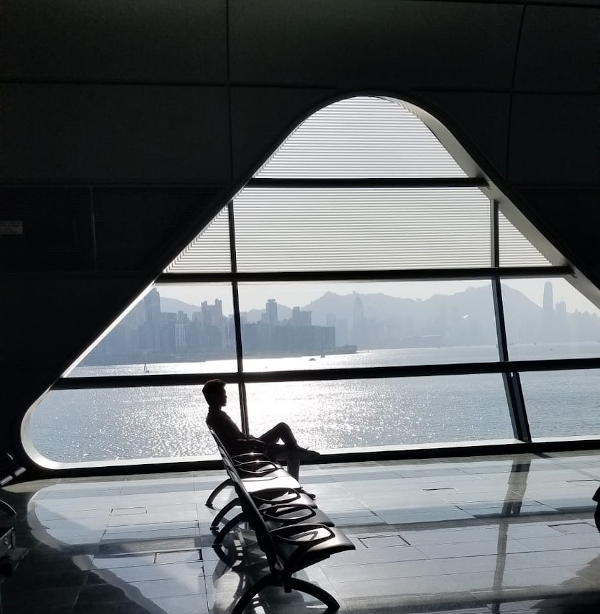
Our production pulled as many strings as we could with the government. Finally, we had conditional permission to shoot at the cruise terminal, as long as everyone in the production tested before entering the facilities. Now, that sounded like a good deal, but as we thought about it, it really wasn’t. What if I or Rayssa tested positive? Or Keoni? If that happened, we would not be able to complete the film. Should we roll the dice on testing, or take the safe route and shoot at an inferior location for the film’s finale?
We rolled the dice. Production tested 120 people, cast and crew, including Keoni, Rayssa and me. On the day of the shoot, we were all ushered into the cruise terminal and we shot our film’s beautiful finale there. No one asked any questions.
A week later, I was curious and asked how many of the120 people on our production had tested positive. Miraculously, the number was zero.
When we wrapped our film on January 14, 2021, I knew that no matter how the film turned out, we had already won.
All images courtesy Byron Mann.


